-
September 30, 1980, Navy Fleet Support
Squadron TWO, Blue Falcons, was disestablished.
SQUADRON COMMANDING OFFICERS:
|
|
1952 ------ Lcdr. Carlton Soderholm
|
|
|
1960 ------ Cdr. Kirk Hershey
|
|
|
1961
------ Cdr. P. O. Harwell
|
|
|
1962
------ Cdr. R. J. Mattus
|
|
|
1964
------ Cdr. W. F. Tobin
|
|
|
1965
------ Cdr. D. E. Cummings
|
|
|
1965
------ Cdr. W. E. McLuckie
|
|
|
1966
------ Cdr. R. I. McFarland
|
|
|
1967
------ Cdr. R. N. Andresen
|
|
|
1968
------ Cdr. W. C. Larry
|
|
|
1969 ------ Cdr. H. C. Whelchel Jr.
|
|
|
1970
------ Cdr. R. Clifton Jones
|
|
|
1971
------ Cdr. Larry Renner
|
|
|
1972 ------ Cdr. C. B. Howard
|
|
|
1973 ----- Cdr. Taylor
|
|
|
1974 ----- Cdr. R. A Lambert
|
|
|
1975 ----- Cdr. L.T.
Lowe
|
|
|
1976 ----- Cdr. T.K.
Whittaker
|
|
|
1977 ------ Cdr. P. R. Black
|
|
|
1978 ------ Cdr. W. T. Lesuer
|
|
|
1979
------ Cdr. M. B. Chesser
1980 ---- Squadron Decommisioned
|
|
|
|
|
|
Home Ports
1952
- - - - - Naval Air Station Quonset Point, Rhode Island.
|
|
|
|
1960
- - - - - Naval Air Station Oceana, Virginia Beach, Virginia.
|
|
|
|
Tail Code
---------
JE
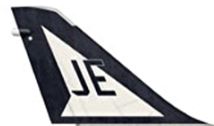
Call Sign --------"Anthony"
|
|
|
1952:
FLECOMPRON TWO (VU-2) was originally a Utility Squadron FOUR
Detachment stationed at Quonset Point, Rhode Island. On
January 8, 1952 demand for utility services had grown to the
point where VU-4's Quonset Point detachment was redesignated
Utility Squadron TWO (VU-2). Lcdr. Carlton Soderholm, USN
was the first Blue Falcon Commanding Officer.
Mission
|
|
VU-2's mission was to train aircraft controllers and
ship gun crews; provide flights to assist in the
completion of functional radar tests for Atlantic
Fleet and NATO naval units; conduct of transition
training in the FS aircraft for newly designated
aviators; and aerial combat maneuvering flights in
conjunction with fleet fighter squadron combat
readiness training.
|
|
|
The newly commissioned squadron had a complement of
30 officers and 185 enlisted men operating the
Douglas JD-1 "Invader" and Grumman F9F "Cougar."
VU-2 pilots towed bright red and white targets past
firing batteries of U. S. ships from Maine to Puerto
Rico. Cougars flew high-speed intercepts for
stations and ships in the Atlantic Fleet.
|
- Aircraft
Date Received - -
- - Type of Aircraft:
1952 - - - - - - - - - - - -
Douglas JD-1 Invader
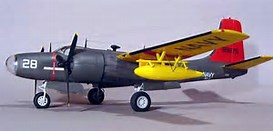
__________________________________________________________
1952 - - - - - - - - - - - - Grumman F9F Cougar.
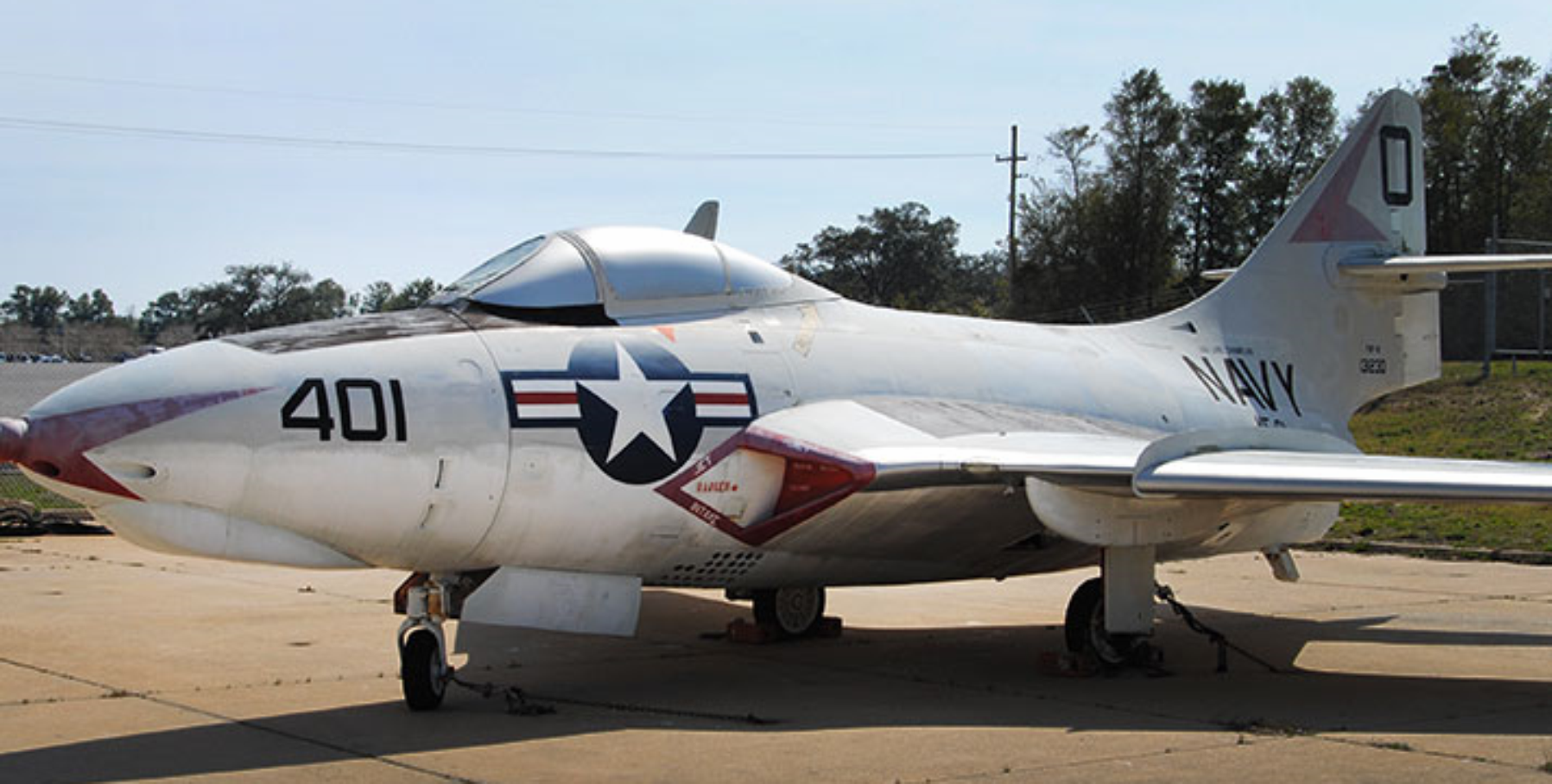
___________________________________________________________
1959 - - - - - - - - - - - - Grumman S2-F Tracker.
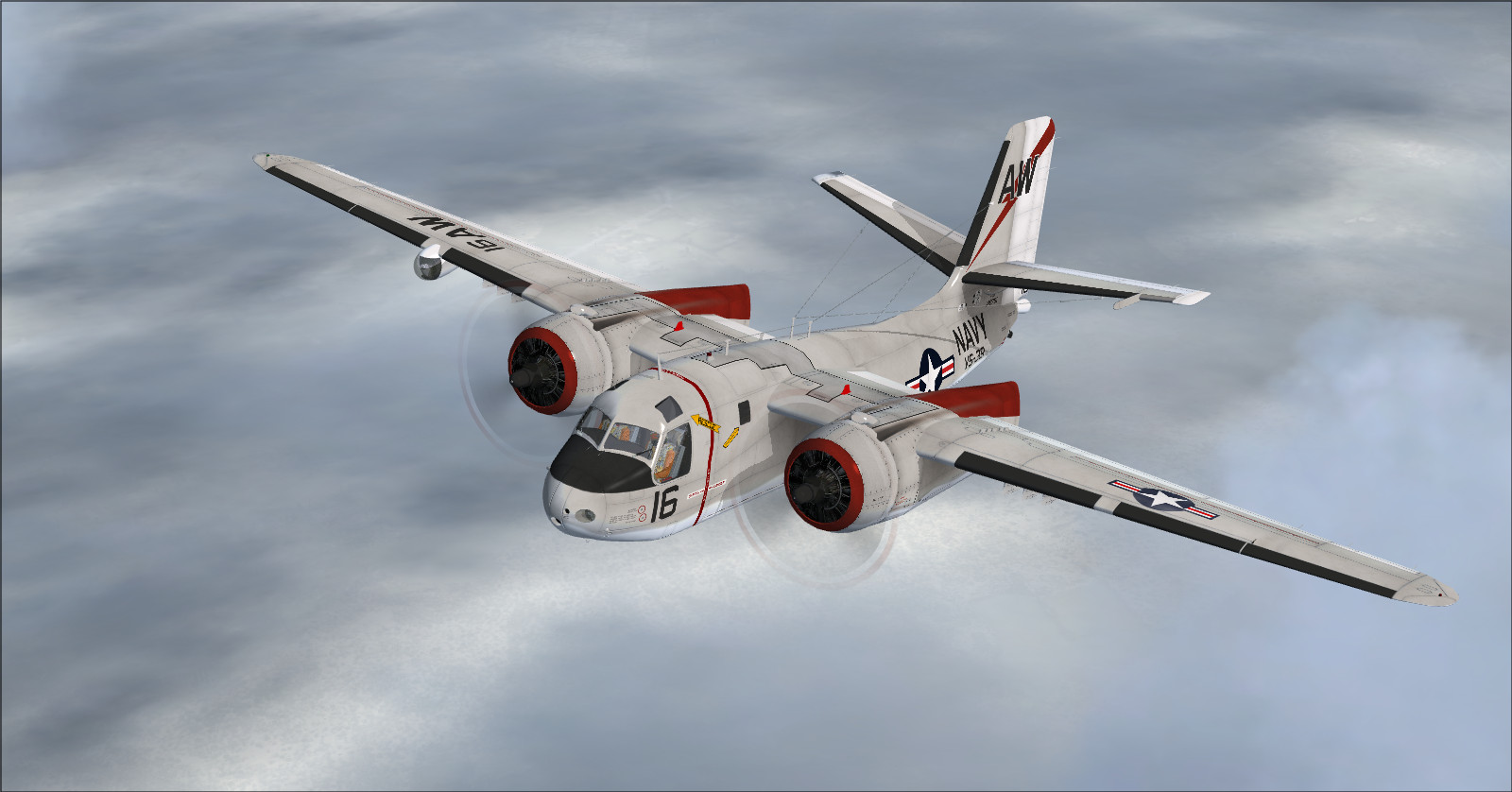
___________________________________________________________
1960 - - - - - - - - - - - - North American FJ-3
Fury.
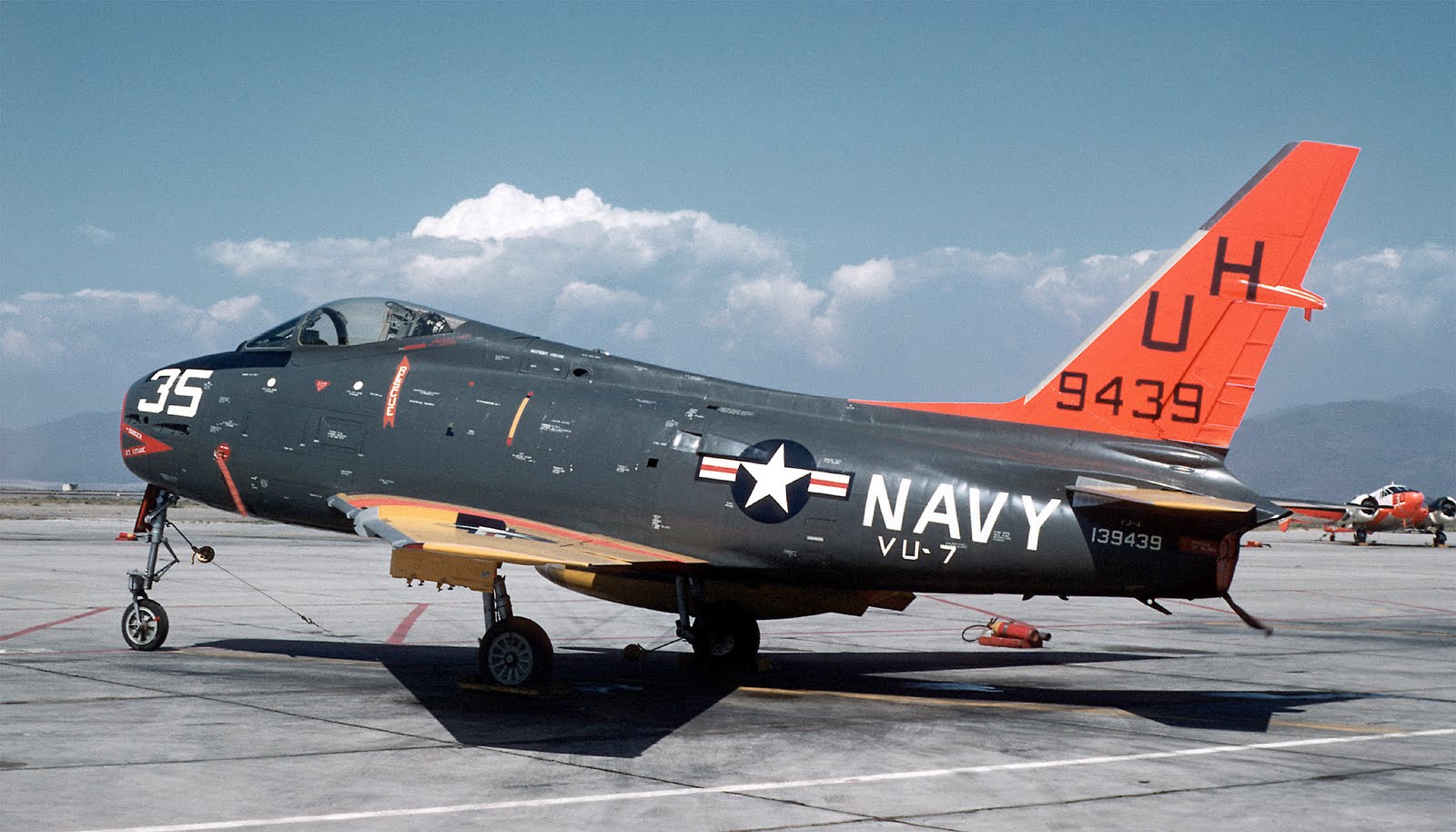
___________________________________________________________
1961 - - - - - - - - - - - - Vought F-8U Crusader.
.jpg)
___________________________________________________________
1971 - - - - - - - - - - - - Douglas A4D-5 (A-4E)
Skyhawk
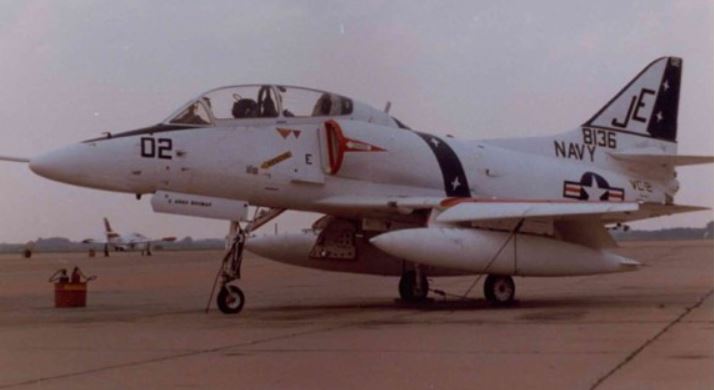
|
|
|
1959:
VU-2 acquired the KD2R5 and the KDBI target systems to
provide experience for Atlantic Fleet gunners. When launched
from the fantail of ships, KD's presented small, fast
moving, recoverable targets for radar and gunfire tracking.
|
|
|
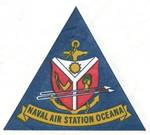
June 1960:
VU-2 moved to the Naval Air Station Oceana at Virginia
Beach, Virginia, leaving VU-2 Detachment Quonset Point,
Rhode Island with the squadron's Douglas JD Invaders. The
move enabled the Blue Falcons to increase service to the
Fleet Anti-Air Warfare Training Center at Dam Neck, Virginia
and the fleet in the Norfolk area. Utility Squadron TWO
pilots stowed their tow-targets and became "BOGIES" flying
the North American FJ-3 "Fury" North American FJ-3 "Fury"
for radar tracking exercises and air-to-air intercepts.
|
|
|
July 1961:
Utility Squadron TWO became the first supersonic utility
squadron on the Atlantic coast when VU-2 received the Vought
F-8U "Crusader." The Crusader's increased performance
enabled the Fleet Anti-Air Warfare Training Center to
accomplish the complexities of high speed aircraft
intercepts.
|
|
|
May 1962:
Utility Squadron TWO was tasked to provide DELMAR tow
targets to the fleet. The DELMAR tow profile provided
realistic air-to-air and sea-to-air missile firing training
for the Atlantic Fleet.
|
|
|
1963:
UTRON TWO flew 4,539 accident free hours during fiscal 1963,
receiving a
COMNAVAIRLANT Citation for the outstanding
achievement. In August VU-2 was chosen to "pilot" the Navy
Maintenance Data Collection System, a counterpart of the Air
Force 66-1 Program.
|
|
|
1964:
Utility Squadron TWO established UC-2 Detachment 33
Jacksonville, Florida and VU-2 Detachment Key West, Florida.
The VU-2 Jacksonville Detachment serviced ships from
Charleston, South Carolina and Mayport, Florida as well as
air units from Naval Air Station Cecil Field, Florida. The
VU-2 Key West Detachment towed DELMAR targets providing
air-to-air missile firing training for fleet squadrons.
|
|
|
January 1965:
UTRON TWO flew an all time record 570 "Crusader" hours. The
record was achieved using the F-8C Crusader which had been
assigned in April 1964. The hour accumulated as VU-2 trained
Blue Falcon pilots for all-weather high-speed intercepts in
the enhanced radar ability F-8C Crusader. Meanwhile the Blue
Falcons performed high-speed intercepts to train and
evaluate sea and land based student air controllers.
|
|
July 1, 1965:
UTRON TWO (VU-2)was redesignated Fleet Composite
Squadron TWO (VC-2).
|
|
|
December 1965:
Fleet Composite Squadron TWO increased emphasis on
Crusader squadron pilot weapon platform training.
VC-2 became the first Composite Squadron to fire
live Sidewinder missiles. All squadron pilots
participated in live Sidewinder firing exercises
with a 76% kill record. Sidewinder training was
accomplished while the squadron perfected techniques
to tow a new supersonic Hayes target. These two
demanding tasks did not hinder the squadron's busy
aircraft service mission.
|
|
|
|
1967:
VC-2 transitioned from F-8C Crusaders to F-8A Crusaders
while the squadron provided its traditional Atlantic Fleet
service. The Blue Falcons also flew service missions for the
German Navy ships "Z-2" and "Z-3" and the Spanish ship
DEDALO.
|
|
|
August 1968:
VC-2 Blue Falcons received a COMNAVAIRLANT aviation safety
citation for flying 3240 accident-free hours.
|
|
|
July 1969:
The Blue Falcons transitioned from the F-8A Crusader to a
modernized F-8K Crusader.
|
|
1969:
VC-2 Detachment Quonset Point, Rhode Island
completed its 10th year of accident free operation.
|
|
|
December 1969:
Even with austere funding which limited Blue Falcon
potential the squadron operated accident free,
transitioned eight pilots to the F-8K Crusader and
was often commended for its outstanding services.

|
|
|
|
1970:
Commanding Officer Cdr. R. C. Jones guided the Blue Falcons
through a series of major evolutions, including
transitioning from the F-8K Crusader to the Douglas A-4E &
A-4C "Skyhawks" and US-2C "Tracker."
|
|
VC-2 formed a new permanent VC-2 Detachment at Naval
Air Station Cecil Field, Florida.
|
|
|
VC-2 Detachment Quonset Point received a
COMNAVAIRLANT aviation safety citation for its 1970
accident-free operations.
|
|
|
|
May 1971:
FLECOMPRON TWO became the only East Coast utility squadron
when sister squadron, VC-4, was disestablished. VC-2 met
increased tasking for the Atlantic Fleet and NATO units
spread along the United States coast from Maine to Mexico.
|
|
July 1971:
While transitioning to new aircraft types and
meeting increased mission tasking, VC-2 continued
operating accident free for a second consecutive
year.
|
|
|
VC-2 Detachment
Quonset Point completed its 11th year of accident
free operation, having flown more than 16,000 hours
since forming July 1960.
|
|
|
|
September 30, 1980:
Navy Fleet Support Squadron Two, the Blue Falcons, was
disestablished.
|
AWARDS:
|
|
COMNAVAIRLANT aviation safety citation - - - 1965
|
|
|
Navy E - - - 1975
|
Information
for this page was provided by:
|
|
Cliff Jones,
Harry S. Gann,
Al Heinz,
Bob Herrman,
Ed Jennings, LCDR Lumpy Sudbeck, Christopher Weisse, Dan Lee
|
|
|
|
|
.jpg) FLECOMPRON TWO
FLECOMPRON TWO